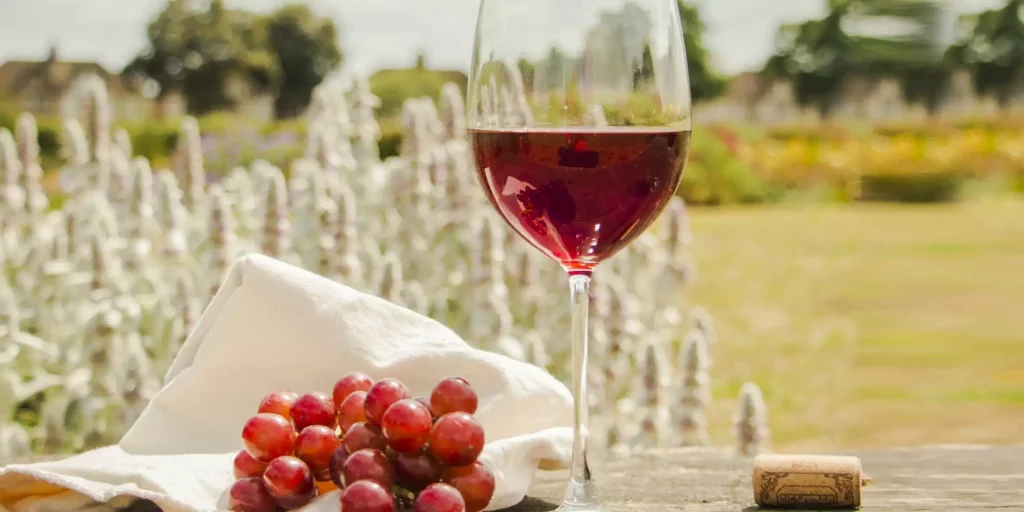WHAT IS A RED BLEND WINE?
Are you looking for a versatile wine to add to your collection? If so, consider making a red blend your next purchase. This type of wine can be enjoyed by itself or with a variety of foods. Plus, many different types of red blends are available, so you’re sure to find one that suits your taste.
WHAT ARE RED BLENDS MADE FROM?
Red blends are typically made from a mix of different red grape varieties. The most common red grapes used for blending are Merlot, Cabernet Sauvignon, and Syrah. However, many other grape varieties can be used to make red blends, such as Zinfandel, Pinot Noir, and Malbec.
When blending different grape varietals, the goal is to create a wine with the best characteristics of each variety. For example, if you blend a smooth and fruity Merlot with a strong and earthy Cabernet Sauvignon, you’ll get a wine that has the best qualities of both grapes. This is why blending different grape varietals is often seen as an art form.
WHAT DO RED BLENDS TASTE LIKE?
- Blended wines may have a more uniform flavor. This is because the different grape varietals used in the blend can balance each other out, resulting in a smoother overall taste.
- Inexpensive red blend wines usually have a specific flavor profile, allowing the winemaker to tweak the formula using different varieties yearly to produce a consistent product.
- Red blends have a wide range of flavor combinations, which are largely controlled by the grape types and vinification procedures employed in their production. Cabernet-heavy mixes, for instance, will be full-bodied and flavorful, while merlot-dominant blends will be silkier and smoother.
- These wines are not overly sweet, but neither are they scorched. A tiny bit of both is present. In the last five years, domestic winemakers have realized this, leaving some RS in their red blends to find the sweet spot that the ordinary customer appreciates.
- The mixes are largely similar to Bordeaux blends in terms of varietals used and are not sweet. These wines are fermented fully dry, although their alcohol content is sometimes higher than that of their European counterparts due to the maturity of the grapes. It also has a deep, dark crimson color in the glass, with scents of ripe fruit, vanilla, and coffee. In addition, it boasts a full-bodied, tannic flavor with fruit and wood flavors.
6 Best Wine Blends To Try
Red mixes can be prepared with any combination of grapes, but there are a few tried-and-true methods for classic blends. Here are the six best red blends examples:
1. Macari Dos Aguas Red Blend
This is a little lighter red blend. The fruit is subtle but noticeable, and you can nearly smell the acidity. Leathery aromas abound on the palate, with tannin framing the fruit. This wine’s depth isn’t what makes it great. It’s all about the balance.
This excellent red blend pays homage to the two huge bodies of water surrounding the estate’s North Fork vineyards: the Great Peconic Bay and the Long Island Sound. This 60 percent merlot mix is vinified with cabernet sauvignon, cabernet franc, and Petit Verdot, in the style of Bordeaux’s classic red wines. Polished tannins and crisp acidity complement notes of luscious plums, vanilla, cassis, and dark cherries, making this wine a great match for mushrooms, lamb, and grilled.
2. Domaine du Pélican ‘Trois Cépages’ Arbois
This crisp and refreshing blend of Pinot Noir, Trousseau, and Poulsard is defined by notes of tart red fruit, cranberry, and fresh-cut herbs. On warm days, this drink is ideal for enjoying outside. Cool before serving!
A mix of trousseau, poulsard, and pinot noir produces this luscious, easy-to-drink bottle. This fruit-forward wine bursts with peppery aromas of cranberries, cherries, and crunchy red fruits while being low in alcohol. It goes well with a variety of meats and cheeses when served chilled.
3. La Antigua Clásico Reserva
A traditional Rioja is made from high-altitude vineyards in the Rioja appellation’s Sierra de la Demanda region. Garnacha grapes date back to 1940. The vines are grown in red silica mineral soils, which are extremely rare in Rioja. Braised meats, roasted mushrooms, stewed beef, duck, and game go nicely with this wine.
The blend is Deep red. Cherry and red berry smell with smoke and spice accents are balanced by flowery oil, game, and pipe tobacco flourishes. On the palate, it’s smooth and focused, with juicy raspberry and sharp cherry notes that get sweeter with air. On a long, fruit-driven finish, well-integrated tannins give form to the wine’s vigor and subtle floral character.
4. Château Coutet St. Emilion
The organic Château Coutet is a traditional St. Emilion with a strong aroma and black tones. However, the aroma becomes more delicious and subtle with a bit of oxygenation. In its youth, the wine tastes rounded and fruity, with hints of tobacco, ripe berries, and a touch of dry grass.
Merlot dominates the wines of St. Emilion. This silky-smooth wine oozes with aromas of luscious blue and black cherries, crushed blackberries, currants, tobacco, and a trace of sweet spice, thanks to 30% cabernet franc and a smidgeon of cabernet sauvignon and malbec. Château Coutet has a 400-year history, and all of its grapes are now organically cultivated.
5. Monte Rio Cellars Skull Red Blend
This California winery, founded by veteran sommelier and wine director Patrick Cappiello, produces ethically made wines at reasonable pricing. This red mix’s grapes are whole-cluster fermented petite Sirah, mission, and zinfandel. All the fruit is organic, the yeasts are indigenous, and no sulfur is added during the winemaking process.
This fruity, easy-drinking red is made from 50 percent organically grown, carbonically macerated Petite Sirah, and 30 percent Mission Zinfandel (20 percent ). A long, acid-driven finish follows notes of luscious berries, red currants, cherry compotes, and sweet spice. Enjoy while it’s still cold.
6. Luis Seabra Vinhos Xisto Ilimitado Tinto
Luis Seabra Xisto Ilimitado is a red wine created by Bodega Luis Seabra in the Douro Valley, Portugal, from Touriga Franca, Tinta Amarela, Tinta Roriz, Rufete, Tinta Barroca, Malvasia Preta, and Donzelinho Tinto.
The grapes come from four vineyards in Cima Corgo that is located at an elevation of 400 meters and have mostly clay soils with yellow slates.
Xisto Ilimitado is a field mix of six types grown in three schist-based Douro subzones. It’s fermented 100 percent whole cluster with natural yeasts. It’s also matured for 12 months in a neutral barrel and five months in a tank before bottling. Pomegranate, cherry juice, white pepper, and freshly cut herbs will contribute to a light finish.
If you’re looking for more expert recommendations about red blends perfect for any occasion, you can contact Yours Truly Wine now! We offer the best red blend wines in town with our wine box subscriptions. Order yours today!




